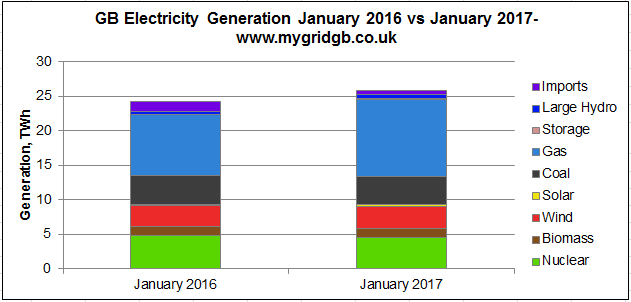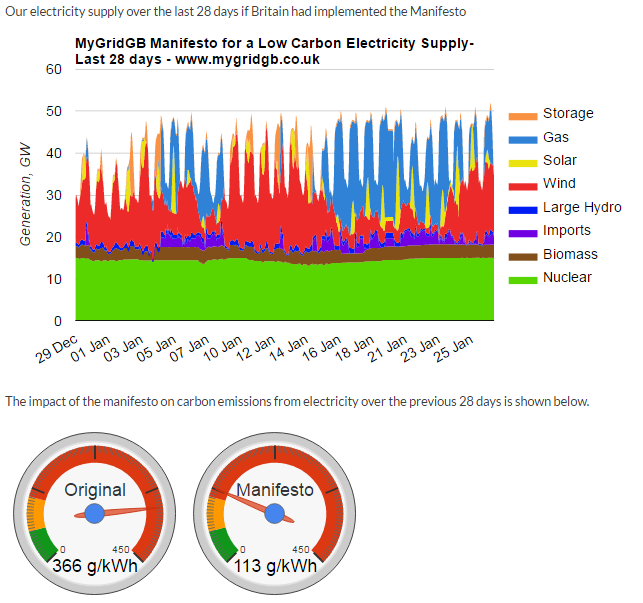
January 2017 represents the first chance to provide year on year comparison of electricity generation. When preparing the data for this blog, I didn’t expect to be very excited. However the analysis that I am about to show show a very interesting picture.
In short, there is some evidence that electricity in the first 28 days of January 2017 were much worse for the environment than the first 28 days of 2016.
The chart below shows the volume of electricity generated by source in the first 28 days of 2016 and 2017. Looking closely at this you notice a few things.
- The volume of Nuclear, Biomass, Wind and Hydro barely changed year on year.
- Demand in the first 28 days of 2017 was higher
- The percentage of electricity provided by coal fell by just 1%
- The contribution of gas jumped by 26%
So to be clear, 2016 was widely reported (including by myself) as the year that coal began to end it’s contribution to our electricity. However, 2017 has started with similar volumes of coal powered electricity. The coal power station visible from my bedroom window is pumping out coal power as much as it did a year ago. In fact, because of the increase in gas, the electricity system produced more electricity in the first days of 2017 than the first days of 2016!

What has driven this result is increased demand. National Grid has been forced to use coal power stations to meet our energy needs. There is a shortage of capacity in the British electricity system and there is, at present, insufficient low carbon alternatives connected to the grid.
There are some shining lights for those seeking low-carbon electricity. Solar power contributed 40% more electricity and energy storage played a much more active role in the electricity system. But these remain small fractions of a large system. Solar was just 1% of the electricity supply in January. That has to change.
Electricity future is about a mix of measures to provide a reliable and low carbon solution. In January 2017, electricity produced 366g of C02 per kWh. Under my manifesto, it would have produced less than a third of that.
Over 2017, expect more comparative blogs to see whether our electricity is truly becoming more low carbon or whether all this sustainability talk is just hot air. As a believer in the need for low-carbon living, I will be looking closely at what the data tells us about this energy transition and reporting my findings to you.

